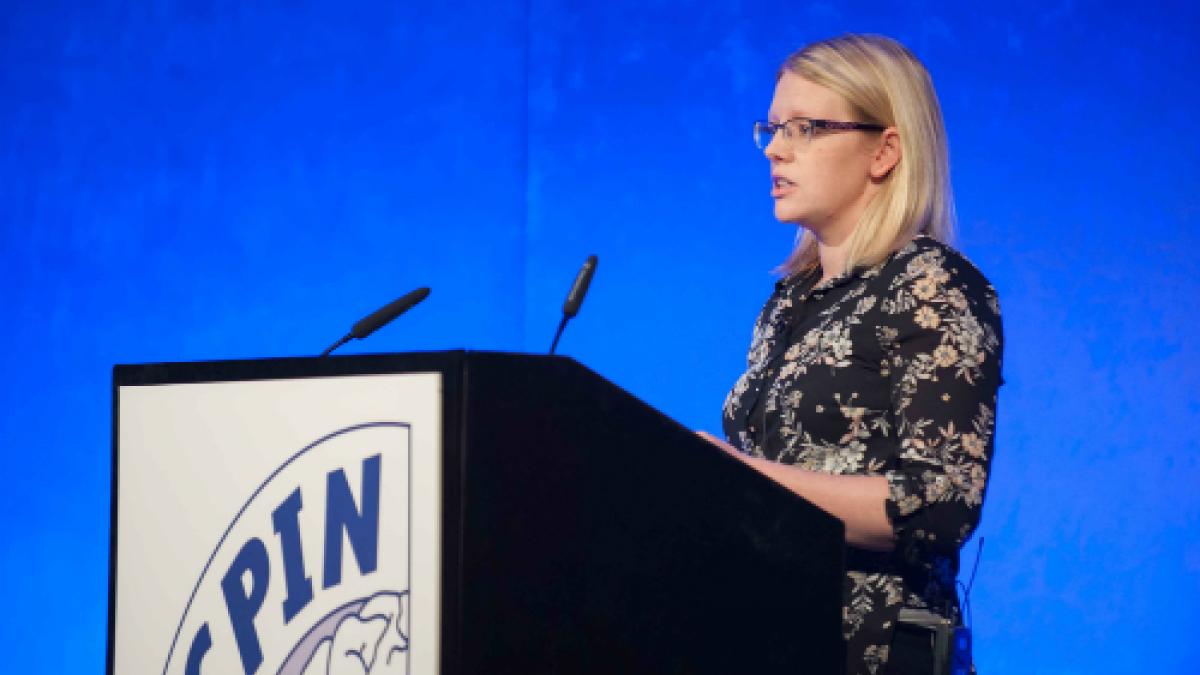Constraint induced movement therapy for brain-injured patients is enhanced by the close involvement of carers, and the use of home diaries to record progress.

Katy Pedlow spoke about constraint therapy at the ACPIN conference. Photo: Nathan Clarke
This was the message from Katy Pedlow, services coordinator for the Northern Ireland charity Brain Injury Matters, at an international conference of physiotherapists in neurology, held in London last week.
The conference heard there is ‘a robust evidence base’ for the therapy being very effective for stroke and traumatic brain injury patients. However, despite this, ‘most therapists in the UK have not used constraint induced therapy.’
Dr Pedlow said the therapy, which has been shown to lead to big improvements in the use of the affected upper limbs of brain-injured patients, lasts for one and a half hours per day for five days a week, for three weeks.
Carer involvement
Patients wear a mitt on their unaffected limb, to stop them using it, and the aim of the work is ‘to get the limb moving’. They are given a variety of tasks to do at home, as well as at the clinic, and record their practice, as well as their daily routines, in a home diary. This enables the clinicians to monitor practice, and identify where problems may have occurred. However, Dr Pedlow said her work with patients had shown that ‘carer involvement is key, in terms of motivation’.
In terms of how clinical work is organised, Dr Pedlow said: ‘We use a multidisciplinary team approach, with an occupational therapist and physiotherapist mix. It is worth trying in areas where staffing is a problem, and therapy assistants can also be used under the direction of the physiotherapist.’
Find Out More
Number of subscribers: 0



































